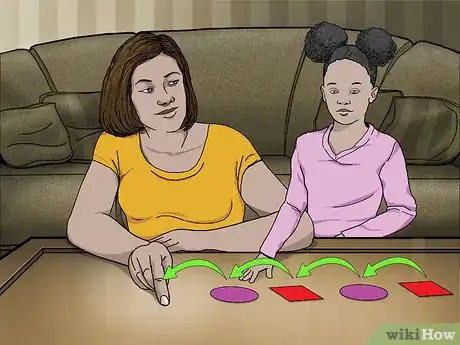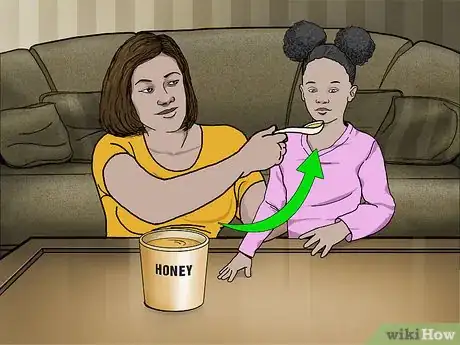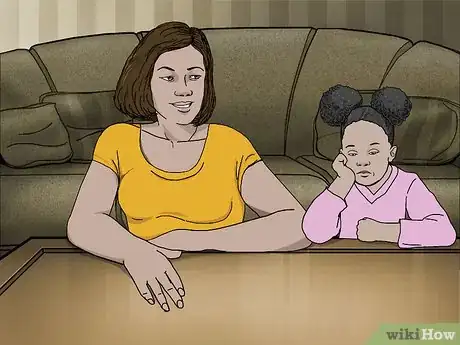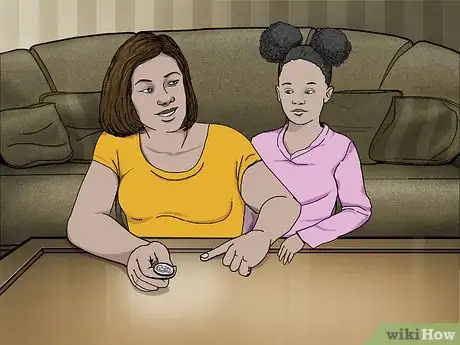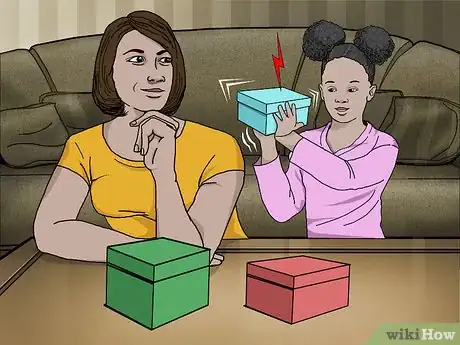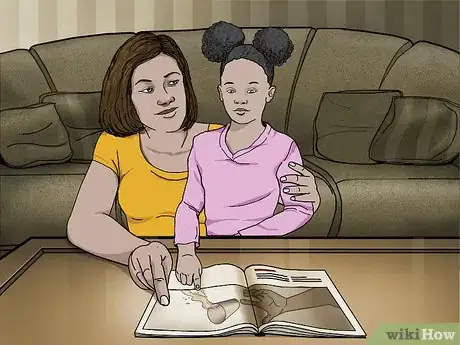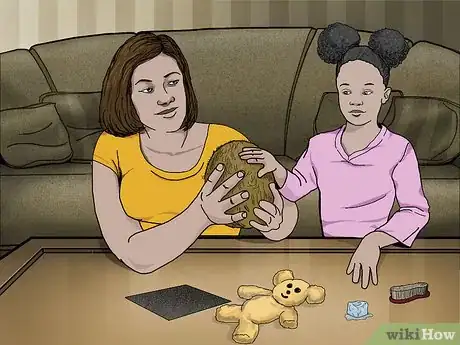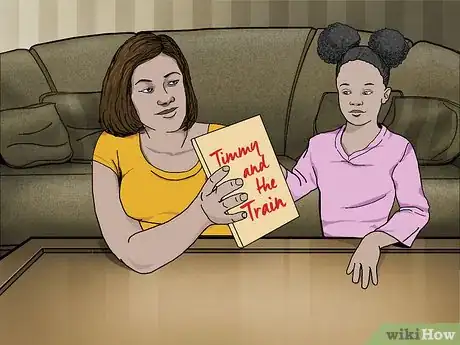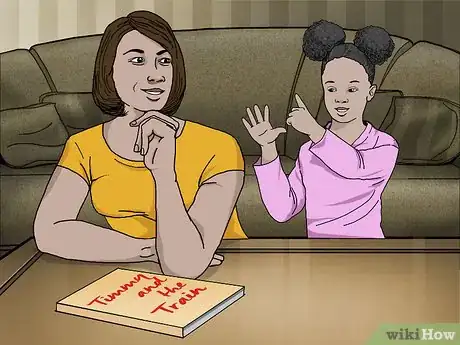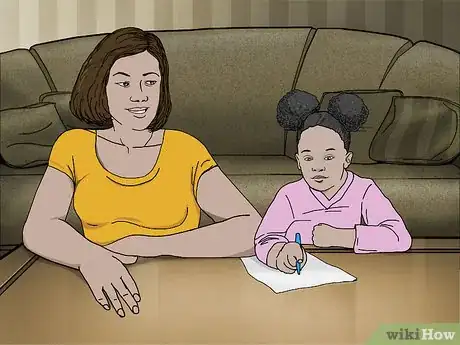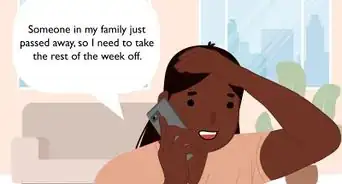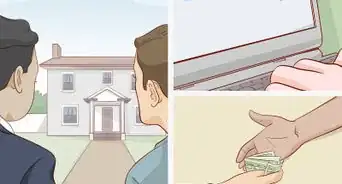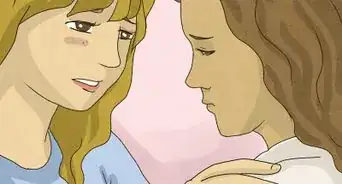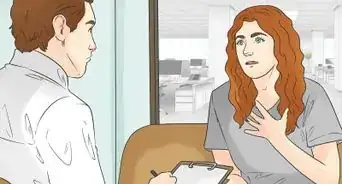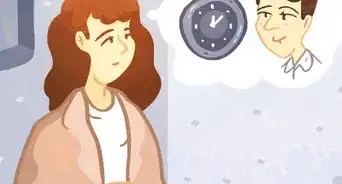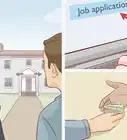This article was co-authored by Catherine Palomino, MS. Catherine Palomino is a former Childcare Center Director in New York. She received her MS in Elementary Education from CUNY Brooklyn College in 2010.
There are 8 references cited in this article, which can be found at the bottom of the page.
This article has been viewed 25,900 times.
Prediction skills form an important basis for young children learning reading, math, and science. To help children pick up these skills, you can encourage them to find patterns and make connections in their everyday lives. Make it fun by introducing different activities where the child must use their imagination. When reading together, ask questions to get them to think about clues and context. The child will learn to draw connections and think critically based on the context of a situation.
Steps
Anticipating Events
-
1Emphasize patterns. Pattern recognition is essential to prediction skills. Children in preschool are often developing their ability to recognize patterns. You can help them by pointing out patterns in your everyday life.[1]
- You might use cut-out shapes to teach them patterns. Organize a basic pattern by alternating shapes. For example, you might lay out a square, a circle, a square, a circle, and a square. Ask the child, “What shape goes next?” As they get older, you can introduce more advanced patterns with more shapes.
- Try pointing out patterns in nature as well. For example, after it rains, you could look for rainbows.
- Identify cause and effect in everyday situations too. For example, you could mention that if you arrive to the store too late, then it will be closed.[2]
-
2Predict everyday events together. For young children, predicting small everyday events is a helpful tool to help them find patterns and consider consequences. Ask the child questions about what they think might happen before you do basic events.[3]
- Before you eat a meal, ask them what they think it will taste like. You can ask, “If I gave you a spoonful of honey, would it taste sweet or sour?”
- You might ask them to predict the weather. For example, you could say, “The sky is cloudy today. Do you think it will rain?”
- Five minutes into their favorite cartoon, you can ask, “What do you think will happen?”
Advertisement -
3Draw on their previous experiences. If a child does not know the answer to a question, ask them to think about the last time something similar happened to them. See if they can draw a connection between the previous event and the present one.
- For example, you can ask them, “What happened the last time you skipped your nap?” They might answer that they were sleepy or that they became grumpy.
- You can also ask them if they think the same thing will happen again this time. For example, you can say, “Do you think that will happen again? Why do you say that?”
-
4Encourage them to explain their predictions. To help children form concrete connections between past and future events, you should also follow up your questions with an explanation. Ask them to point out clues that support their prediction, or see if they can connect a past event to a present one.
- You might say, “I see you think that the sun will set before dinner today. Why do you say that?”
- Another way of saying it is, “So you think that the coin will land on heads? Why do you think that is?”
Playing Prediction Games
-
1Guess the contents of a box. Put an object inside of a box, and seal it shut. Hand the box to the child, and ask them to guess the contents without looking inside. Encourage the child to hold, shake, and listen to the box. See if they can predict what is inside.[4]
- Small objects work well for this activity. You can put marbles, coins, beans, or dice in the box. A small ticking watch or a wind-up car might also work well.
- You can prepare multiple boxes with different objects inside. Ask the child to note the differences between each box. Is one heavier than another? Do they sound different when you shake them? What do they think is in each box?
-
2Ask them to imagine what happens next in photographs. Print or clip out images from a magazine, newspaper, or website. These might be images where the subject is actively participating in an activity such as driving, eating, or running. Ask the child what they think will happen next, and make them point out clues in the image that support their prediction.[5]
- For example, show a child an advertisement with a spilled cup of coffee. Ask them, “What do you think will happen next?” They might say that someone has to clean up the mess or that they need another cup of coffee.
- Advertisements and news stories are a good source for images to use in this activity.
-
3Let them guess how objects feel. Collect a few different objects with various textures—such as soft, rough, coarse, bumpy, and smooth. Show each to the child. Ask them to tell you what they think it will feel like without touching it themselves.
- For example, you might ask them to look at a coconut, a stuffed animal, sandpaper, a raincoat, an ice cube, and a brush.
- For each object, you can ask, “What do you think this will feel like?” If they are unsure, try giving them a few options. You can say, “Bumpy? Prickly? Smooth? Cold? Warm?”
-
4Ask “what if” questions. Imagination is an important part of prediction. To help encourage a healthy imagination, pose “what if” questions to your child, and see if they can predict what might happen. Follow these questions up with more specific details to get them to think about different consequences.[6] You can ask them:
- “What if I put salt instead of sugar in your tea? What would it taste like?”
- “What if the sun didn’t rise? Would it be warm or cold? Dark or light?”
- “What if everything you touched turned into candy? What if you touched your friend?”
- “What if we went to the moon? What would you see there?”
Predicting While Reading
-
1Examine the cover. Pick a new book to read together. Make sure they have not read it before. Show them the cover of the book, and ask the child to tell you what they think it will be about. Ask them to explain why they said those things.
- You can ask: “By looking at the cover, what do you think this story is about?”
- Follow the question up by asking: “Why do you think that? What clues tell you that?”[7]
-
2Stop throughout the story. After a few pages, stop reading, and ask the child what they think will happen. Encourage them to compare their original prediction with what they know about the story already.[8]
- You can say, “Is this what you thought would happen? What do you think will happen now?”
- Keep encouraging them to pick up on clues, both in the pictures and in the text. You can say, “Can you point to any clues that tell you that?”
-
3Reflect after reading. Once you have finished the story, talk about your predictions together. Ask the child if their predictions came true. Invite them to explain why the book ended the way it did.[9]
- You can say, “Was this what you predicted would happen?”
- If they did predict the ending, you might say, “Good job. How did you know?”
- If they did not predict the ending, you might say, “Are there any clues that you missed that could have helped you predict the ending?”
-
4Record their predictions. If the child is reading chapter books on their own, you might ask them to write a paragraph or, for younger children, draw a picture every time they read a chapter. Ask them to record what they think might happen in the next chapter. Encourage them to record why they think this will happen.[10]
References
- ↑ https://www.zerotothree.org/resources/299-help-your-child-develop-early-math-skills
- ↑ https://wehavekids.com/parenting/How-Patterns-Help-Children-Learn-About-Life-predictions-math-balance
- ↑ http://static.nsta.org/connections/elementaryschool/200712TorresHandoutParentNSTAConn.pdf
- ↑ http://www.learnnc.org/lp/pages/3329
- ↑ https://educators.brainpop.com/lesson-plan/making-predictions-activities-for-kids/
- ↑ https://www.psychologytoday.com/blog/the-main-ingredient/201209/play-the-what-if-game
- ↑ https://www.teachervision.com/reading/predicting-lesson
- ↑ http://thisreadingmama.com/activities-for-making-predictions/
- ↑ https://www.teachervision.com/reading/predicting-lesson
